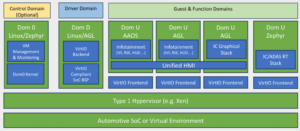
Guest author: Sergio Koller, Linkbuilder
Drivers are essential on a Mac because they allow you to use various peripheral devices. The challenge is that sometimes you might not have the correct driver, or the driver may be unstable. Additionally, if you stop using a device, its driver may continue consuming system resources. Learning how to uninstall drivers on a Mac is important, and you need to know the right way to do it. Here’s what to focus on.
Is there a difference between drivers and System Extensions?
To many people, these might seem similar. But before you uninstall the easy way, you need to understand their differences. Drivers allow peripherals to work properly with your Mac, while system extensions are background tools that add extra features to the system. Drivers are important, but you may also need to use System Extensions at times.
Where are drivers installed on a Mac?
In most cases, some drivers will add a pane to System Settings. Others may install a utility in the Applications folder, or place files in the Library folder. The location varies, but the key is to check where each driver is located. Although it may take some time, knowing the driver’s location in advance gives you peace of mind and helps prevent issues later.
Uninstalling drivers with a cleanup tool
Using a cleanup tool makes it easy to uninstall drivers whenever needed. You simply choose the driver you want to remove, and the process is seamless and straightforward. It may take some trial and error to identify everything, but once done correctly, it greatly improves your experience.
The main advantage of a cleanup tool is that it also removes leftover files, making the process safer and more efficient. It ensures the drivers are removed completely, preventing any lingering files from causing problems later. It’s an easier, safer approach that helps avoid potential issues in the future.
Manually uninstalling drivers
Cleanup tools automatically remove drivers, but if you don’t have access to one, you can uninstall them manually. However, this requires some technical effort and can be challenging. Here’s how to do it:
- Open Finder and choose Go.
- Navigate to the Library folder, then check Application Support, Caches, Launch Agents, Launch Daemons, and Preferences. Delete any files related to the driver.
- Drag those files to the Trash. Press Command + Space to open Spotlight, search for the driver’s name, and drag any remaining results to the Trash.
- Empty the Trash, and you’re done.
Is it necessary to uninstall older graphics drivers?
Some people think installing new drivers over old ones is fine, but that’s not the case. You should remove the old graphics driver before installing new ones. Doing so prevents conflicts and frees up space, making this the better approach.
If you can’t uninstall a driver, try restarting your Mac. This often helps resolve the issue. Be careful when deleting files manually — don’t remove anything unless you’re sure it’s related to the driver, as doing otherwise could cause system issues.
Conclusion
Sometimes, uninstalling drivers is necessary, and it’s important to do it correctly. It can take time to figure out the best approach, but the methods above are effective and reliable. They allow you to remove drivers smoothly and without hassle. While the process can be tricky, handling it carefully makes all the difference. Follow these tips to safely remove drivers from your Mac and avoid potential issues!
Guest author: Sergio Koller, Linkbuilder
Image source: Unsplash



